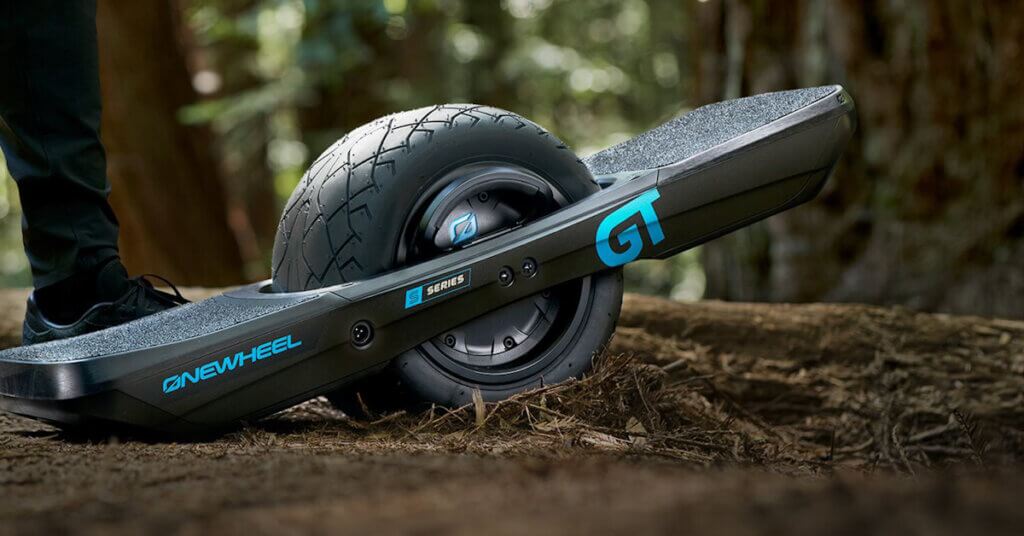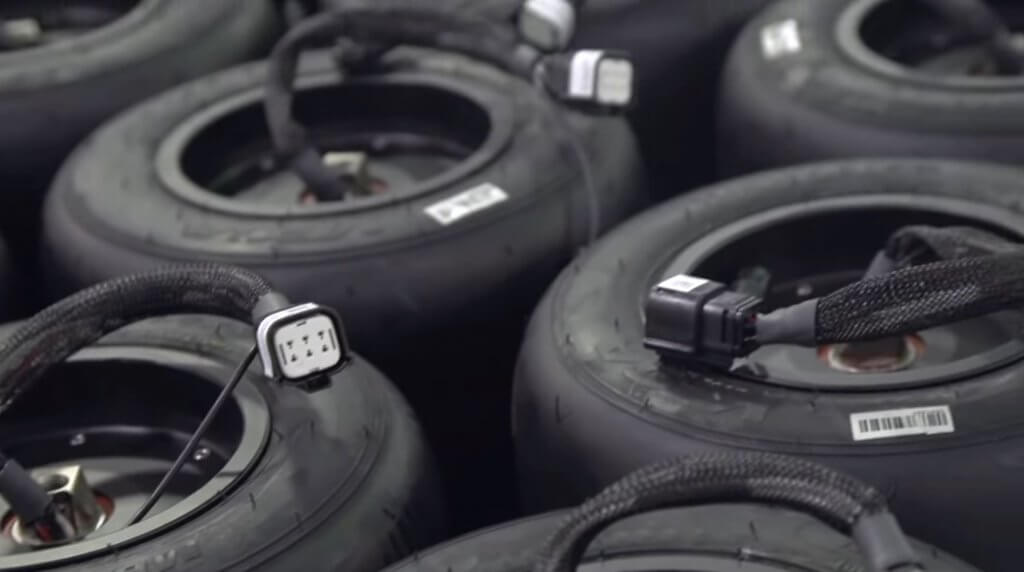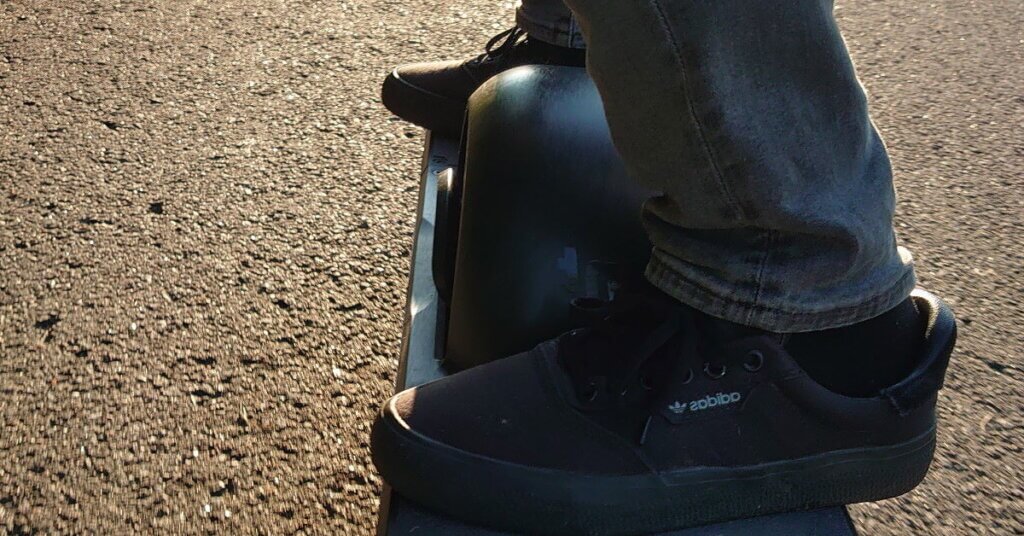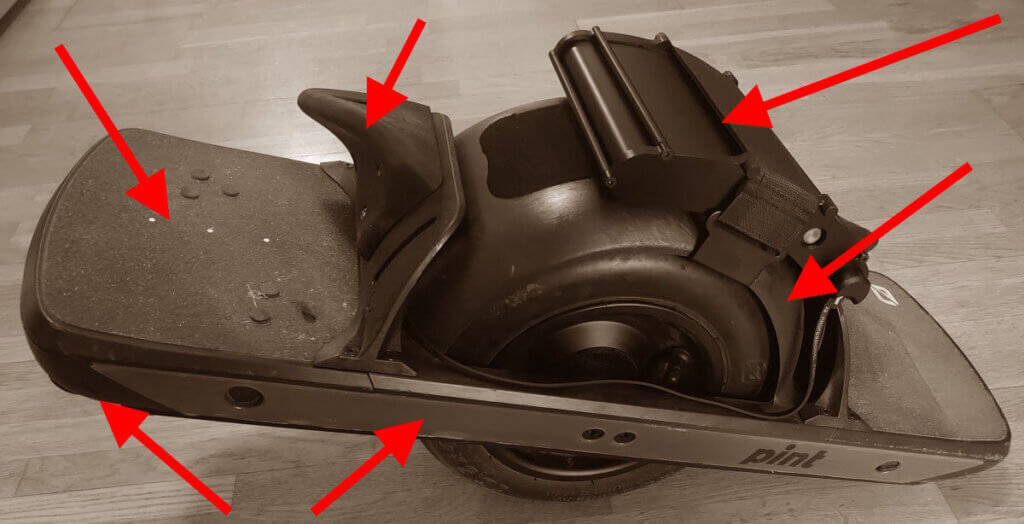Riding on an Onewheel is a great way to travel around the city, and its lightweight body makes it one of the most portable electric unicycles. This portability comes with a price. The bigger board, Onewheel GT S-Series XL, weighs in at a hefty price of $3,500, and the smallest Onewheel Pint at $1,050 before tax. This is before adding any accessories or safety gear, both something I recommend you do.
The Onewheel Pint retails for $1,050 and the GT S-series XL for $3,500, including free shipping from Future Motion. To the price add tax and optional accessories like fender, stand, and charge plug.
The most expensive Onewheel is the Onewheel GT S-series XL, with a starting price of $3,500. If you are buying the biggest package, Epidome, then it will set you back $3,950, including a fender, bumpers, rail guard, a hypercharger and the FST System.
Onewheel Pricing and Accessories
This table summarises the base prices of the Onewheel Pint and Onewheel GT, along with the price for the GT Freeride Bundle, which includes additional accessories. Keep in mind that prices may vary based on taxes and the choice of optional add-ons.
| Model | MSRP | Addons |
|---|---|---|
| Onewheel Pint | $750 | Varies (with tax and add-ons) |
| Onewheel Pint X | $1,100 | Varies (with tax and add-ons) |
| Onewheel Pint S | $1,400 | Varies (with tax and add-ons) |
| Onewheel XR Classic | $1,900 | Varies (with tax and add-ons) |
| Onewheel GT | $2,300 | Varies (with tax and add-ons) |
| Onewheel GT S-Series | $2,900 | Varies (with tax and add-ons) |
| Onewheel GT S-Series XL | $3,500 | Varies (with tax and add-ons) |
If you are interested in more information about the latest board check out the Onewheel GT information page.

Onewheel MSRP’s:
- Pint – $750
$1,050 - Pint X – $1,100
$1,500 - Pint S – $1,400
- Onewheel XR Classic – $1,900
- Onewheel GT – $2,300
- Onewheel GT S-Series – $3,200
- Onewheel GT S-Series XL – $3,500
Future Motion Inc., the company and manufacturer behind the Onewheel, has taken a very unique product to the market. There are alternatives to the Onewheel, but no other company is close regarding quality, performance, and rideability at this point.
The products closely related to the Onewheel, electric unicycles, and EUC, have seen a huge development in the past years. These machines are still coming in at a high cost.
Onewheel GT and GT S-Series
It can be a hard thing to decide if the money is worth it to get the GT S-series over the regular GT. The GT S is a step into the performance Onewheel sector, specifically designed for racing enthusiasts. And a direct competitor to the Floatwheel Adv. While it claims the title of the fastest Onewheel in its lineup, it does come with a slight trade-off in terms of range when compared to the Onewheel GT.
Priced at an additional $900 compared to the standard GT Onewheel, the GT S-Series positions itself as a premium option for those seeking top-notch performance. The extra investment delivers a set of enticing features, including a treaded tire, an impressive top speed of 25 mph, Lowboy footpads, and a noticeable 2-pound reduction in weight. This is a result of the increase in the new powertrain from 75V in the GT to 113V.

What sets the S-Series apart is its unparalleled power, eliminating any hesitation when navigating uphill or tackling challenging terrains. Despite a roughly 20% decrease in range, prospective buyers are typically prioritizing power over extended travel distance. The GT S-Series caters to a specific audience who values raw power and performance over the considerations of range.
Pint and Pint X Pricing – Opt for the Pint X for Enhanced Performance
When considering the Onewheel Pint priced at $1,050, newcomers to the one-wheel hoverboard scene might want to redirect their attention to the Pint X. The rationale behind this suggestion lies in the upgraded Pint X, featuring a larger battery, identical to the one used in XR models. The advantage of this larger battery extends beyond a more robust trail riding experience; it also alleviates any concerns about range anxiety. After all, no Onewheeler wants to find themselves stranded on a trail with a drained battery!
If you have the Pint, then you can always add an additional battery, with the downside of not as sleek a board and a higher risk of damage.

While the Pint stands as a commendable single-wheel hoverboard, if affordability is your main consideration, I’d recommend exploring the option of purchasing a pre-owned, higher-end board. Sometimes Future Motion has had the Pint on sale for as low as $750, for that price, it’s a great buy, else the market often offers used XR Onewheels and even Pint X. Just remember to read our buy a used Onewheel guide so you don’t get scammed.
Manufacturing Costs
Another pricing aspect is the cost of simply manufacturing and producing these boards. The manufacturing and assembly are done in a factory in San Jose. Where the different components are pieced together and tested out before being shipped out to customers around the world.

It’s not only the components and manufacturing cost, but also all the research, patent, legal fees, and the years of designing, developing, and manufacturing Onewheel prototypes, all adding to the overhead cost.
To put the cost into perspective, people easily drop huge sums on their cars, smartphones, and snowboard vacations. In that perspective, $1,050 comes in at a fairly good price for the experience you get to float around towards the sunset.

Real User Experiences
To provide a more holistic view of Onewheel’s value, let’s explore the experiences of real users like myself who have embraced this electric mobility device:
- Commuting: Many Onewheel riders use their boards for daily commuting within the city. The convenience of a last-mile transportation solution cannot be overstated. Riders can easily navigate through traffic, reach their destinations faster, and reduce their carbon footprint.
Just remember, that it’s not fully waterproof, only water resistant. - Having fun: Beyond commuting, Onewheel offers a great fun experience like no other device. Riders often describe the sheer joy and thrill of gliding effortlessly on an Onewheel, whether it’s along scenic paths, trails, or through urban landscapes.
This is what they refer to as “floating”.
Adding Accessories
It’s not uncommon for riders to spend more than $1,000 on accessories for their boards, so the price can go up. This is to protect the board, make it safer, and make modifications to increase the range. Some things are more considered essentials, like protection plates, and we recommend everyone get some front wheels to increase the likelihood that you handle a nosedive.
So when you think about it, purchasing an Onewheel, a product that most riders will probably use for at least a few years, doesn’t seem so bad.

Conclusion
I think that the Onewheel is worth the price tag. I use my board for commuting mixed with my electric scooter. It’s a last-mile device and will never fully replace a car. So I won’t make that comparison. I would say that it definitely can replace the bus or bike in the city.
Getting the new GT S-series is a heavy investment with $3,200, a more reasonable approach for a new rider is to get a Pint X or used board on the market to try the sport. The Pint X is worth it over the Pint at their normal MSRP and is our go-to recommendation for newcomers.
In conclusion, the pricing of Onewheel boards involves various factors, with manufacturing costs playing a significant role. The process takes place in a San Jose factory, where components are assembled, tested, and then shipped globally. Beyond direct manufacturing expenses, the overall cost encompasses research, patent legal fees, and the extensive efforts involved in designing and developing Onewheel prototypes, contributing to the overhead cost.
Despite the substantial investment, when viewed in the context of expenses people willingly incur for items like cars, smartphones, or vacations, the $1,400 price tag for the unique floating experience offered by Onewheel seems reasonable, providing a valuable perspective on the overall cost of the product.
Want to know more, read my 1-year review of the Onewheel Pint.


